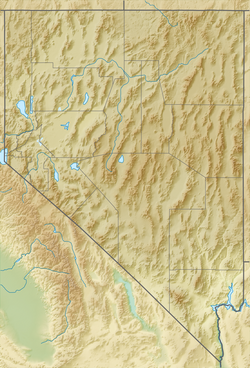| Cedar Range | |
|---|---|
| Highest point | |
| Elevation | 2,043 m (6,703 ft) |
| Geography | |
| Country | United States |
| State | Nevada |
| District | Lincoln County |
| Range coordinates | 37°39′2.876″N114°17′24.944″W / 37.65079889°N 114.29026222°W |
| Topo map | USGS Mosey Mountain |
The Cedar Range is a mountain range in Lincoln County, Nevada. [1]
The Cedar Range is the adjacent range north of the Clover Mountains, anchoring the south on the east perimeter of the Meadow Valley Wash watershed.
